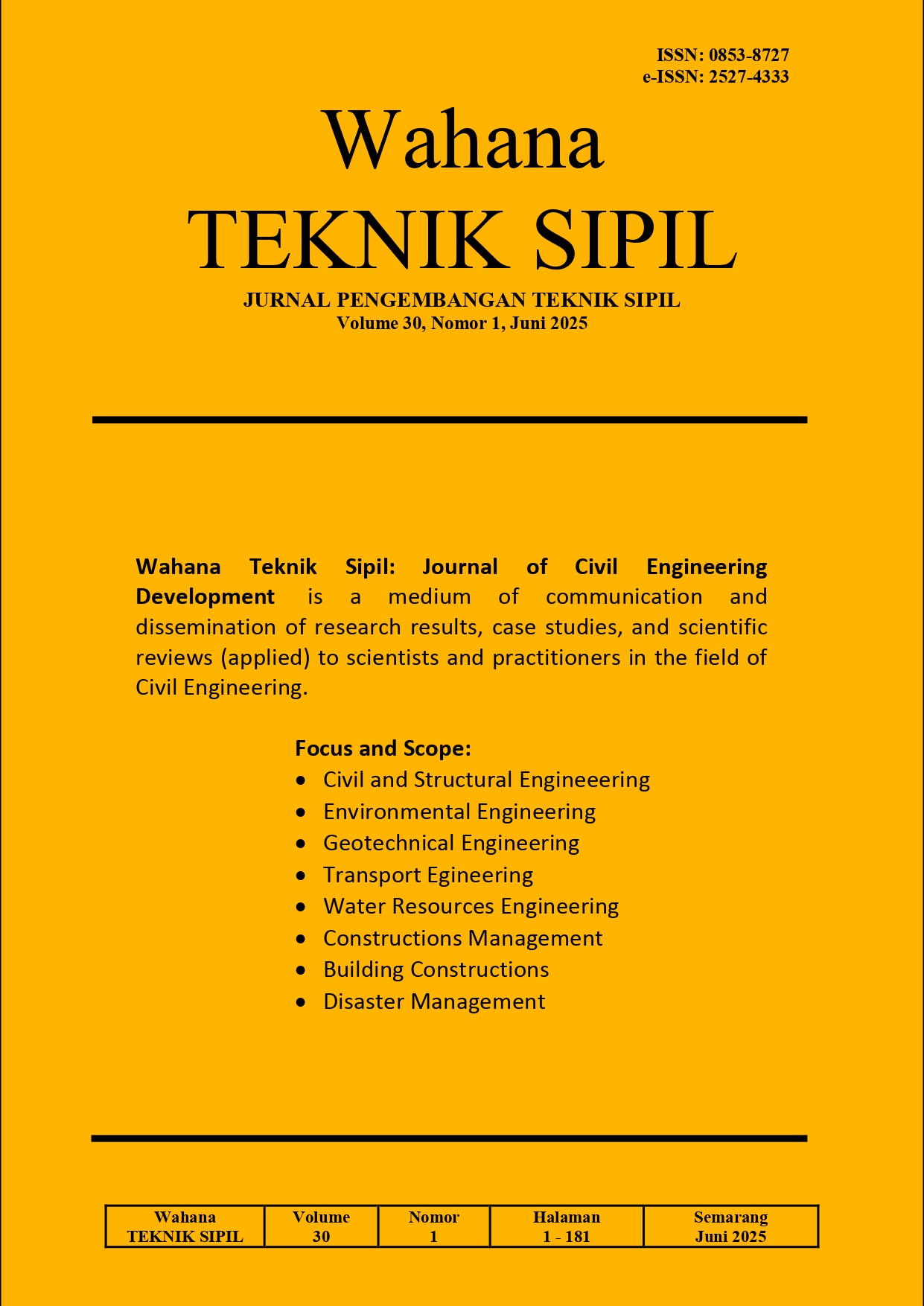PERBAIKAN NILAI KADAR AIR DAN INDEKS PLASTISITAS TANAH LEMPUNG LUNAK MENGGUNAKAN BAHAN TAMBAH EXPANDED POLYSTYRENE (EPS) DAN RESIDIUM CRACKING CATALYST 15 (RCC 15)
DOI:
https://doi.org/10.32497/wahanats.v30i1.6424Abstract
The uneven distribution of development in each region can result in construction on land with poor characteristics. One of the soils that has weak characteristics is soft clay. Soft clay has weak characteristics, such as relatively high water content and plasticity index (PI), so it needs to be stabilized to improve its bearing capacity before being used in construction. This study aims to examine the effect of adding Expanded Polystyrene (EPS) which is a fabricated material with Residium Cracking Catalyst 15 (RCC15) which is a waste product of oil processing from PT. Pertamina on improving the characteristics of soft clay. The specimens from Cililin, Bandung Regency, has a soft inorganic clay (CH) with a clay content of 61% and a water content of 37.945%. Test specimens were made with variations in the addition of EPS of 0.4% and RCC15 of 20%, 25%, and 30%. The results of the property index test showed that the addition of RCC15 can increase the water content and plasticity index (PI) value, with the optimum value at a mixture of 0.4% EPS and 25% RCC15. The impact of using EPS and RCC15 as additives has the potential to increase the stability of soft clay, making it suitable for use in construction.
Downloads
Published
Issue
Section
License
Copyright (c) 2025 muhammad rio eka shaputra, Syahril, Indra Noer Hamdhan, Geni Firuliadhim

This work is licensed under a Creative Commons Attribution 4.0 International License.
Authors who publish with this journal agree to the following terms:Authors retain copyright and grant the journal right of first publication with the work simultaneously licensed under a Creative Commons Attribution License that allows others to share the work with an acknowledgement of the work's authorship and initial publication in this journal.
Authors are able to enter into separate, additional contractual arrangements for the non-exclusive distribution of the journal's published version of the work (e.g., post it to an institutional repository or publish it in a book), with an acknowledgement of its initial publication in this journal.
Authors are permitted and encouraged to post their work online (e.g., in institutional repositories or on their website) prior to and during the submission process, as it can lead to productive exchanges, as well as earlier and greater citation of published work (See The Effect of Open Access).






